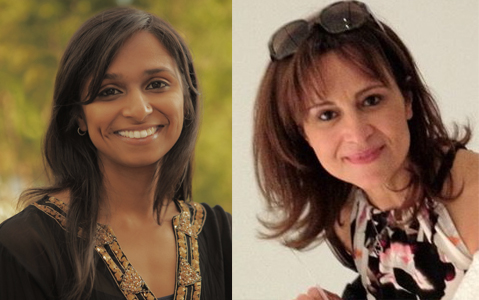“Firefighting in a nutshell is, we carry heavy stuff and then put it down, again and again,” Gayle Sonoda, a fire inspector with the Los Angeles Fire Department, said. “But I can’t just run five miles and be fine. That’s not good enough. I have to progress myself.”
It’s with this attitude that Sonoda has thrived for eight years with the department, where she has served as a paramedic and where she now works in community risk production.
Sonoda played basketball in college and came out of it with a sports medicine degree, but it wasn’t until a stint as an athletic trainer for the Los Angeles Heat firefighter football team that she realized she could fight fire for a living.
LAFD Battalion Chief Alicia Welch said many firefighters come from athletic backgrounds like Sonoda. ’We think there’s a pretty good correlation between athletes and firefighting,” Welch said. “If you’re part of a team sport, you’re dedicated to a team. We’re a team in the fire service too. We work together, we all have a certain position.”
But initially, Sonoda was hesitant about looking into joining the department.
“My [own] profile didn’t match my vision of what a firefighter was,” Sonoda said. “But [the team members] encouraged me to ride out to the fire station, and I absolutely fell in love. All the teamwork, all the camaraderie, all the things you learn on the job.”
That she has a medical background helped – Sonoda became an EMT, volunteering at a fire station and juggling two jobs, before joining the department.
Her own profile, of course, was one many of us imagine when we call the word “firefighter” to mind. She soon found out that sliding down poles and drowning fires is only a part of it. “One of the biggest misconceptions of firefighters is that all we do is firefighting,” she said. More than 80 percent of calls in the city are for emergency medical services. “We have to have a lot of life-saving skills. Nobody calls us on a good day. We’re always the 911 for something that’s going wrong, and we are there to help them.”
The need for the city’s fire department to reflect the city’s diverse make-up is not lost on Sonoda, who herself is of Japanese and Mexican heritage. “All different types of backgrounds come together to solve a problem when we’re on call, and we want to be able to reflect and reach out to the person who’s calling us for help,” she said.
“We want people in ethnic-based communities to understand that [firefighting] is a career that is available to them,” Welch said. She heads recruitment for the department. “It’s easy for Caucasian males to see a fire truck go by and see somebody that looks like them, and they can relate to that and understand they can be a firefighter, but it’s not as easy for Latinos, African Americans, women, Asian Americans, to see that same reflection on that fire truck.”
That sort of outreach is part of Sonoda’s responsibilities as fire inspector, as she continues to work with the Candidate Assist Program, which is an option for those in the community interested in the fire program to come and explore and experience the training academy.
In the community risk production unit, her current projects include fall prevention for the city’s elderly, and an initiative to help everyone learn hands-only CPR to increase the success rate of surviving cardiac arrest.
She’s not done yet – the next rank available is captain, and then there is the range of options open to the ever-progressing Sonoda within the country’s second-largest fire department. “I could be a diver, I could fly helicopters, I could do arson and carry a gun and do investigations,” Sonoda said. “There’s options after you’re done with four years in the field [as a firefighter].”









